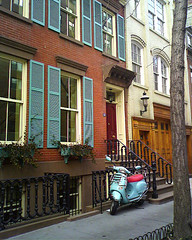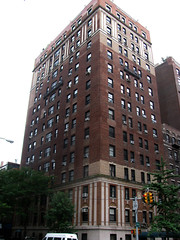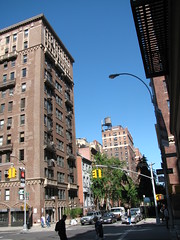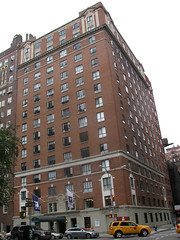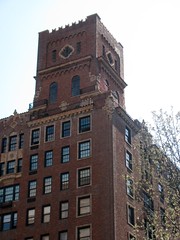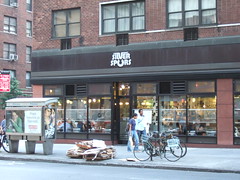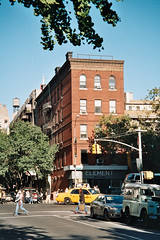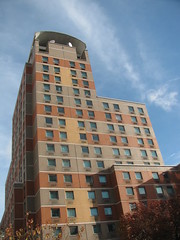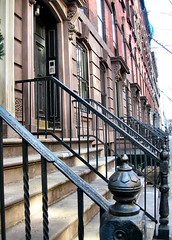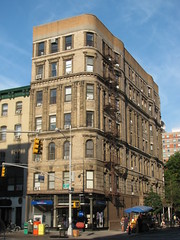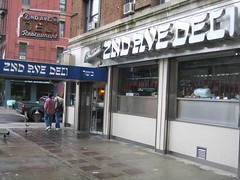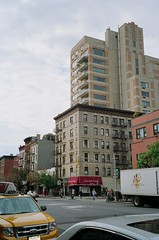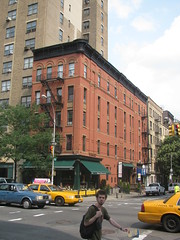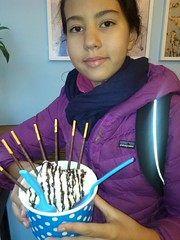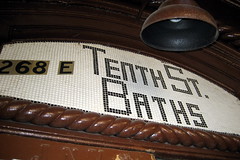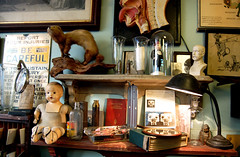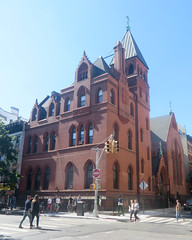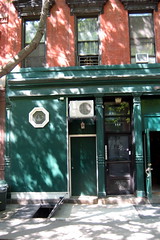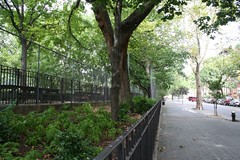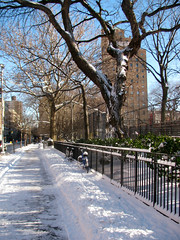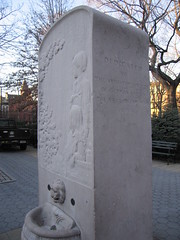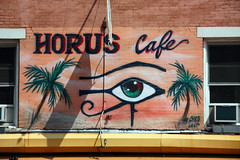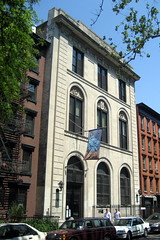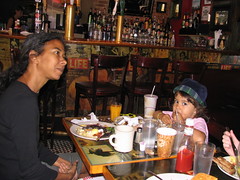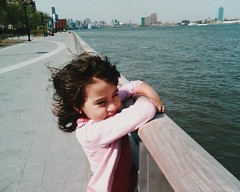North:
Corner: Used to be Bendiner & Schlesinger, medical lab.
Torn down and replaced with a School of Visual Arts dorm, after
negotiations with NYU fell through.
There used to be a plaque here mis-marking the
site of the Stuyvesant Pear Tree--because the
person who rescued the memorial put it up on his own
building and then refused for many years to return it.
The plaque is now back at its proper location, at
3rd and 13th.
109-117: Italianate rowhouses built 1856
119: A Greek Revival rowhouse from 1845
121: This 1899 apartment building with Romanesque
Revival and Neo-Classical influences was the longtime home of
writer
T.C. Gardstein.
123: An Anglo-Italianate townhouse from 1854.
Indie queen
Parker Posey has lived at this address.
125: This building is a twin to No. 123.
127-129: Built in 1854, these buildings
provided housing for New York Mission and
Tract Society workers from 1903-33.
St. Marks West Yard
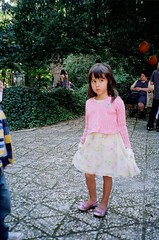
The space between St. Marks' rectory and the
church was to be filled in by a 18-story
apartment tower designed by
Frank Lloyd Wright; with all due respect to
Wright, it's a blessing that the Great
Depression scuttled the plan.
Some of the ancient maples in the yard
were lost to the Asian Longhorn Beetle in 2000.
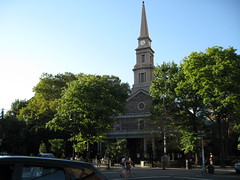 "The Bowery" was Dutch governor Peter Stuyvesant's farm,
and his private chapel used
to stand on this site, making this the oldest site of
continuous worship in Manhattan. This church was erected 1795-99--
one of the few surviving 18th Century structures in
Manhattan--with a Greek revival steeple added 1828
and an Italianate portico completing the structure in 1854.
"The Bowery" was Dutch governor Peter Stuyvesant's farm,
and his private chapel used
to stand on this site, making this the oldest site of
continuous worship in Manhattan. This church was erected 1795-99--
one of the few surviving 18th Century structures in
Manhattan--with a Greek revival steeple added 1828
and an Italianate portico completing the structure in 1854.
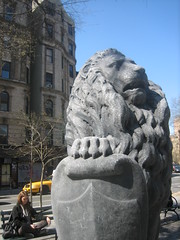
Originally a church of Manhattan's elite, St.
Marks became a progressive force in the neighborhood
both socially and
culturally. Supportive of immigrant, labor and
civil rights, the church was a meetingplace for
Black Panthers and Young
Lords, and launched the first lesbian healthcare clinic.
Poets like W.H. Auden (who was a parishioner),
William Carlos Williams, Edna St. Vincent Millay, Amy Lowell,
Carl Sandburg, Kahlil Gibran, Allen Ginsberg, Patti Smith and
Jim Carroll have all read here; since 1966, the St. Marks
Poetry Project has organized poetery events. The Danspace
project has featured dance legends like Isadora Duncan,
Martha Graham and Merce
Cunningham. Sam Shepherd's first two plays were produced
here, and Andy Warhol screened his early films. The church
served as the setting for a wedding
and a funeral in the film The Group,
and for another wedding in A Beautiful Mind.
St. Marks Churchyard
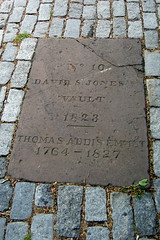 Famous residents include former governor and vice president
Daniel Tompkins, who abolished slavery
in New York; Commodore
Matthew Perry,
who forced Japan to accept U.S. trade; Irish patriot
Thomas Addison Emmett;
and New York Mayor
Philip Hone. Peter
Stuyvesant himself is buried under the church, and six
generations of his descendants are also found here.
Famous residents include former governor and vice president
Daniel Tompkins, who abolished slavery
in New York; Commodore
Matthew Perry,
who forced Japan to accept U.S. trade; Irish patriot
Thomas Addison Emmett;
and New York Mayor
Philip Hone. Peter
Stuyvesant himself is buried under the church, and six
generations of his descendants are also found here.

Department store pioneer A.T. Stewart, whose store
filled the block between 9th and 10th streets east of
Broadway, was
buried here in 1876, but on November 6, 1878, his body
was snatched and held for $200,000 ransom. The widow eventually
regained possession of the corpse in 1881, after bargaining
the kidnappers down to $20,000. He now rests elsewhere.
|
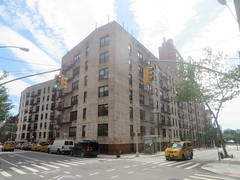
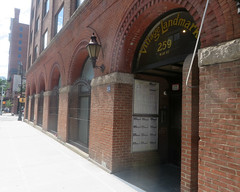
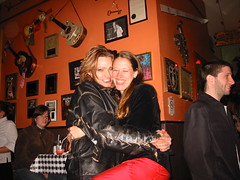
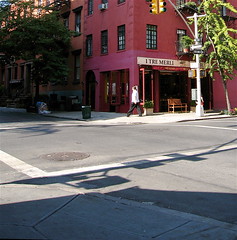
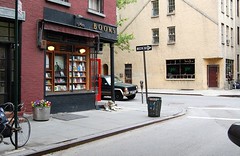
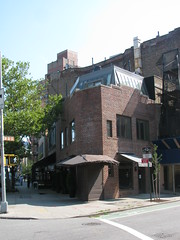
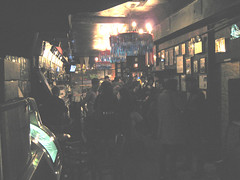
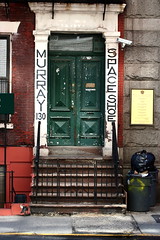


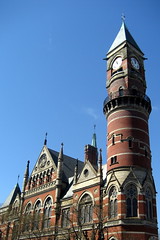
![Patchin Place by Andrea [bah! la realt�!], on Flickr](http://farm3.static.flickr.com/2095/2239811537_1a913ec535_m.jpg)
